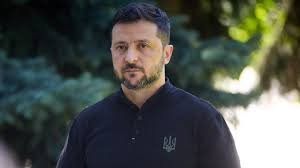Zelensky Rejects Buffer Zone to End Ukraine War
Ukrainian President Volodymyr Zelensky has firmly and unequivocally rejected international proposals to establish a buffer zone to end ukraine war, arguing that such a concept is a relic of past conflicts and fails to account for the stark realities of modern battlefield technology. In a press briefing held on Friday, the president delivered a detailed rebuttal to a reported European proposal for a 40-kilometer demilitarized strip, asserting that only those who do not understand the current technological state of the war could suggest such an outdated solution. This decisive rejection underscores Ukraine’s commitment to a peace that does not compromise its sovereignty or territorial integrity and highlights the complex challenges of negotiating an end to a conflict dominated by long-range drone warfare and artillery.
President Zelensky’s central argument is that a buffer zone to end ukraine war is not only impractical but already exists in a different, more lethal form. He explained that the front line is already characterized by a technological “dead zone” or “grey zone,” an area spanning more than ten kilometers where heavy artillery and concentrations of troops cannot operate due to the pervasive threat of drone strikes. “Today, our heavy weapons are located at a distance of more than 10km from each other, because everything is hit by drones,” he stated, effectively arguing that the battlefield has created its own natural buffer through the constant threat of aerial surveillance and precision strikes. This reality, he suggested, makes a formally negotiated demilitarized zone redundant and reveals a fundamental misunderstanding of how this war is actually fought. Furthermore, Zelensky pointed out that any such deal would likely require Ukraine to cede control over territory within the proposed zone, a condition he outright rejected by stating, “If Russia wants to have a greater distance from us, they can retreat deep into the temporarily occupied territories of Ukraine.”
The president’s rejection comes amid a broader loss of momentum in a U.S.-led diplomatic offensive aimed at finding a resolution to a war that has now raged for over 40 months. Recent high-level meetings, including a gathering between President Zelensky, former U.S. President Donald Trump, and European leaders, had initially raised faint hopes for a potential summit with Russian President Vladimir Putin. However, those hopes have since dimmed, with German Chancellor Friedrich Merz stating that such a meeting would “obviously not” occur because Putin appears “unwilling” to participate in genuine diplomacy. This stalemate was violently emphasized by one of the largest aerial assaults of the war, where Russia fired hundreds of drones and missiles at Kyiv, killing 23 people and damaging buildings near the EU’s offices. In the aftermath, European leaders like Merz and France’s Emmanuel Macron pledged to increase pressure on Russia, noting Putin’s clear disinterest in ending the conflict. As EU foreign policy chief Kaja Kallas condemned Russia’s deliberate assaults on civilians as undermining peace, Zelensky’s chief of staff continued discussions with U.S. officials, noting that every American peace initiative has, unfortunately, been stalled by Russia. Ultimately, Zelensky’s firm stance against a buffer zone is a strategic declaration that Ukraine will not accept a peace deal that ignores the realities of modern combat or legitimizes the occupation of its land, setting the stage for a prolonged and difficult diplomatic struggle ahead.
Go To Main Page

